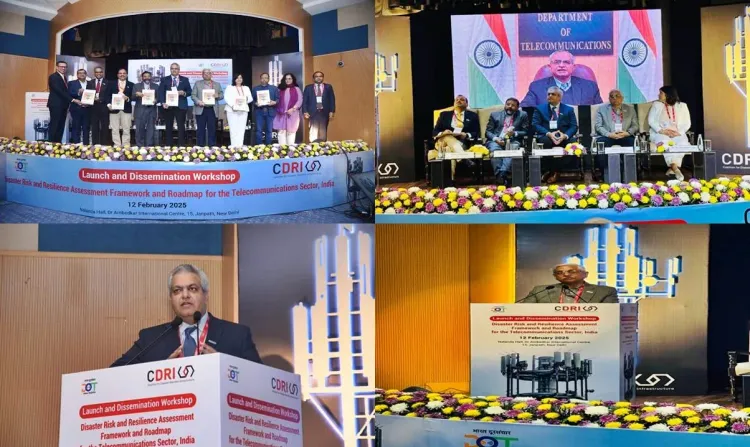DoT Introduces New Strategy to Safeguard Telecom Networks from Natural Calamities

Synopsis
Key Takeaways
- New report focuses on disaster resilience in telecom.
- Collaboration with CDRI and state governments.
- Analysis of 0.77 million telecom towers.
- Recommendations include stronger designs and risk-sharing.
- Initiatives for real-time coordination and emergency alerts.
New Delhi, Feb 12 (NationPress) The Department of Telecommunications (DoT) has introduced a comprehensive report detailing the Disaster Risk and Resilience Assessment Framework (DRRAF) to enhance the resilience of India’s telecom sector against natural disasters.
This report, released in conjunction with the Disaster Resilient Infrastructure (CDRI), forms part of an extensive analysis focused on disaster risk and resilience within the telecom industry.
It encompasses five states: Assam, Odisha, Tamil Nadu, Uttarakhand, and Gujarat, as stated in the announcement.
The report evaluates the threats posed by natural disasters such as floods, cyclones, and earthquakes, while proposing strategies to fortify the resilience of telecom infrastructure.
The DoT collaborated with state governments, telecom providers, and infrastructure firms to compile data for this research.
“Enhancing telecom infrastructure against disasters is a national priority,” stated Neeraj Mittal, Secretary (Telecom) and Chairman of the Digital Communications Commission (DCC).
He emphasized that maintaining uninterrupted connectivity before, during, and after disasters aligns with the UN’s ‘Early Warning for All by 2027’ initiative.
Mittal urged collaboration among government agencies, telecom operators, and disaster management organizations to ensure India’s telecom networks remain robust and dependable.
The study examined 0.77 million telecom towers across India, evaluating their susceptibility to natural disasters.
A new disaster risk and resilience index has been created to gauge the impact of disasters on telecom infrastructure.
The report offers several recommendations to enhance the sector’s readiness.
It advocates for stronger technical designs to ensure telecom infrastructure can endure disasters.
Moreover, it calls for a multi-hazard information system to facilitate data-driven decision-making.
To shield telecom operators from financial vulnerabilities, the report proposes risk-sharing mechanisms and improved financial strategies.
The necessity for a cross-sectoral collaboration framework is underscored, allowing various stakeholders, including government entities and telecom companies, to unite for a swifter and more efficient disaster response.
The DoT has already initiated several measures to bolster disaster readiness.
It has established real-time coordination between telecom operators and government agencies for rapid disaster response.
An indigenous Cell Broadcast System has been adopted to disseminate emergency alerts nationwide.
In collaboration with the Ministry of Home Affairs, the DoT is working on creating Public Protection and Disaster Relief (PPDR) networks to guarantee seamless communication during crises.
Additionally, the promotion of satellite-based communication and High-Altitude Platform Systems (HAPS) is underway to sustain connectivity in disaster-stricken areas.
Regulatory policies are also being enhanced to assist telecom operators in swiftly restoring services post-disasters.










